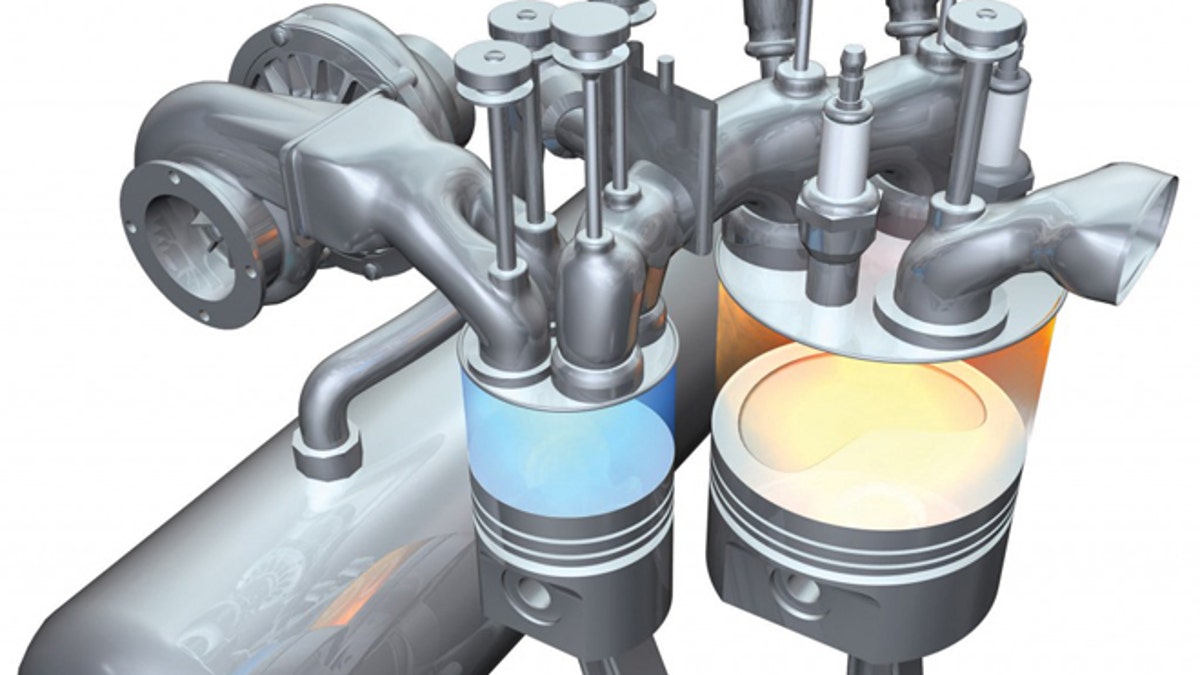
(Scuderi)
Real revolutions in engine technology are rare.
By and large, the internal combustion engine has remained much the same for well over a century, with just general, incremental improvements in all areas separating today's engines from those in the very first automobiles.
Scuderi's patented split-cycle engine is a little different, and if not revolutionary, it's certainly a significant evolution of the engines we know and love.
Most gasoline engines today, with a few exceptions, run on the 'Otto' four-stroke cycle: induction, compression, ignition and exhaust. Fuel and air comes into the cylinder, it's compressed by the piston, the spark ignites the mixture, pushing the piston down in the power stroke, and as the piston makes its way back up again, the exhaust valve opens and the gases are pushed out.
It's simple to understand and the process has become quite refined these days, but it's still relatively inefficient.
The split-cycle engine
The split-cycle engine cuts this four-stroke cycle into two parts. It uses 'paired' cylinders, with each cylinder in the pair doing half the work. We first covered the concept a few years back, after Scuderi completed a prototype.
In the first cylinder, air is drawn through an intake valve, where it mixes with fuel injected into the cylinder. As the piston returns, a different valve opens into a special port. The mixture is pushed through, where it's drawn into the second cylinder through another intake valve.
The valve then closes, the mixture is compressed by the second piston, and ignited in the power stroke. As the piston returns again, the mixture exits through the exhaust valve as it would normally.
Watch: Reinventing the engine
It sounds more complicated than it is, but what it means is that for every crankshaft revolution, the engine is doing more work--while one piston is drawing in fuel and air, the other is already combusting the mixture that's just been sent through.
No more cylinders than normal would be required--so you could still have four, six, eight or more cylinders--but those cylinders are paired so only half of them would actually be combusting mixture. That also means half the spark plugs and half the injectors of a regular engine.
The engine runs on a Miller-cycle principle. This is similar to the Atkinson-cycle used in several hybrids. That normally means less power, but Miller-cycle engines use forced induction--in this case a turbocharger--to make up the power deficit.
Benefits
Scuderi says its split-cycle engine is 25 percent more efficient than a regular "high economy" engine found in efficient European cars, and 13 percent more efficient than best-in-class vehicles.
Emissions are reduced, and Scuderi predicts up to 65 mpg would be possible from a small-capacity unit.
Combine those figures with a hybrid drivetrain and the numbers would start looking very impressive indeed.
So is the Scuderi engine evolutionary, or revolutionary? Until it hits the market it's hard to say, but it could certainly breathe new life into combustion engines.



















